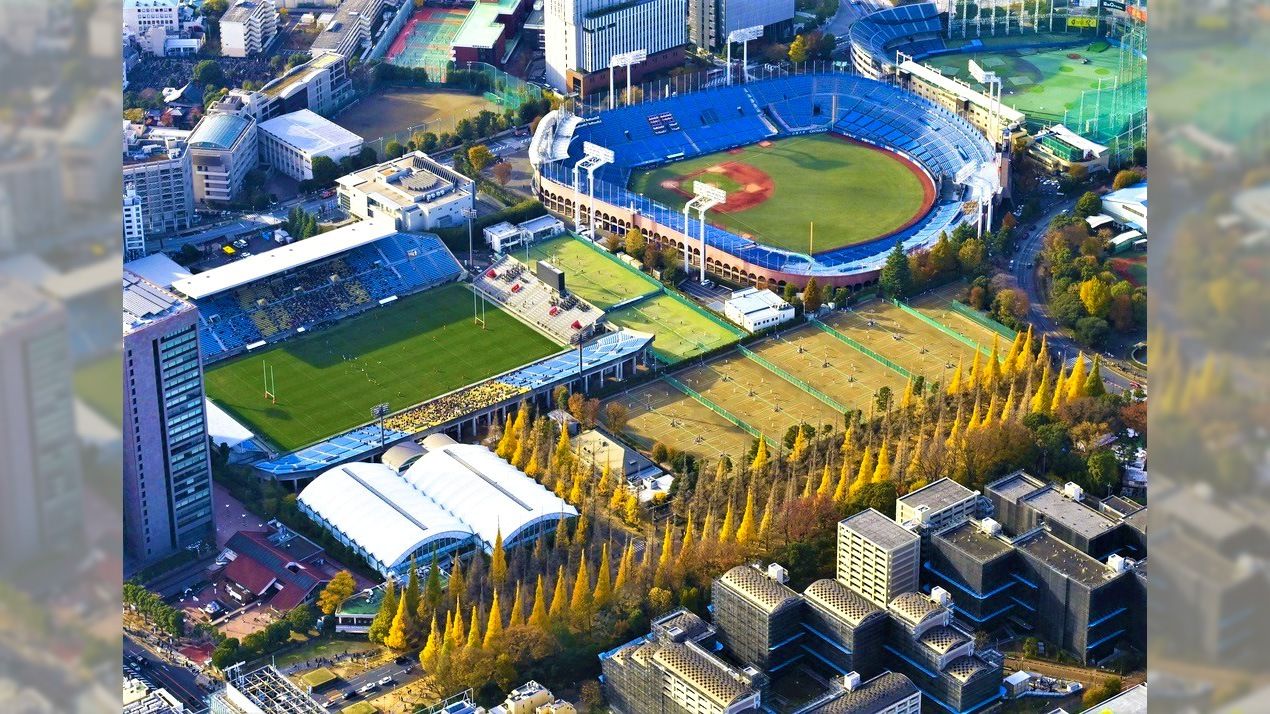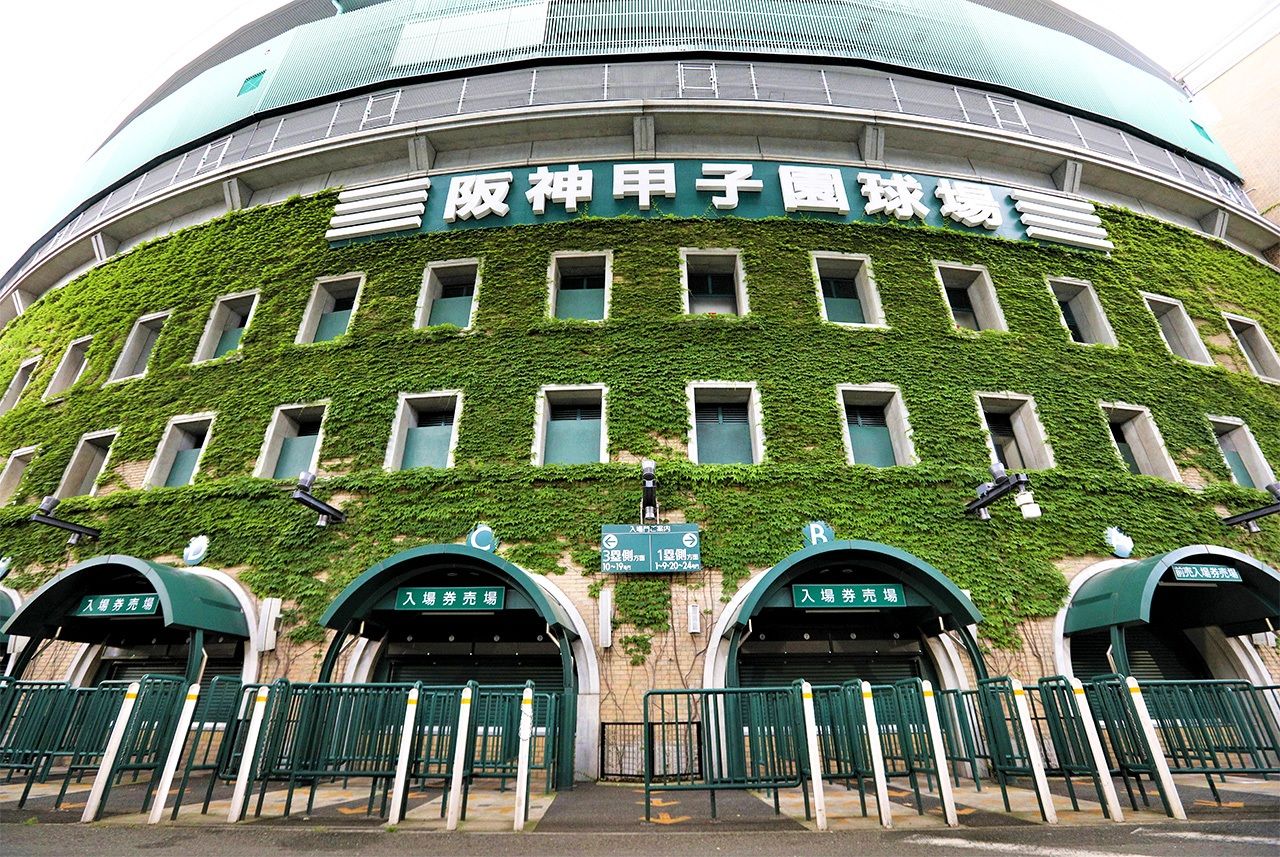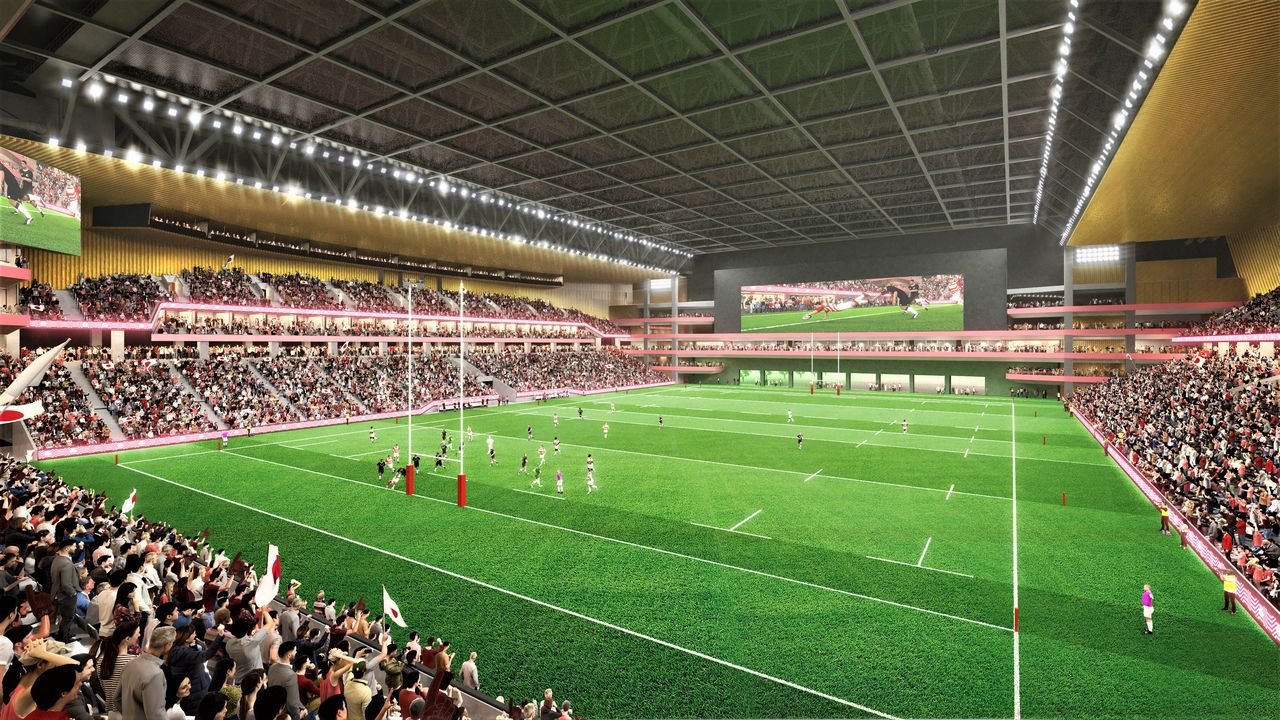
Opposition to Stadium Redevelopment Plans: The Cultural Value of Sporting Venues
Sports Economy Society Environment Architecture- English
- 日本語
- 简体字
- 繁體字
- Français
- Español
- العربية
- Русский
Stadiums Slated to Come Down
The Tokyo redevelopment project was approved on February 17. The organizations involved in the project are Mitsui Fudōsan, Itōchū, the religious corporation that manages the shrine Meiji Jingū and its associated lands, and the administrative agency known as the Japan Sport Council. Following approval by the Tokyo Metropolitan Government, construction began in late March this year, and is expected to continue until the 2035 fiscal year and cost a total of ¥349 billion.
The project begins with the demolition of Jingū Number 2 Stadium, which is used for high school baseball games. In its place a new facility featuring a fully enclosed rugby stadium with a roof is to be built. The next site to be demolished is the current Chichibunomiya Rugby Stadium. After a new stadium with an attached hotel is completed, the final site to be demolished is the current Meiji Jingū Stadium. The site will feature a new “Central Square” as well as a cultural exchange facility, as there are plans to use the site for a variety of different types of events.
Other buildings to be constructed include two complexes that will contain commercial space and three high-rise buildings that will include one office building, a park, and tennis courts. In addition to Jingū Number 2, a softball stadium, golf driving range, futsal court, batting center, and other facilities that are dear to the hearts of local residents will also be demolished as part of the redevelopment project. The loss of these facilities is expected to have a major impact on public participation in sports.
The Stadium Where Babe Ruth Played
Meiji Jingū Stadium (often referred to simply as “Jingū Stadium”), which holds 30,000 fans, is not only home field for the Yakult Swallows professional baseball team, it is also home base for the Tokyo Big 6 Baseball League, the Tōto University Baseball League, and Tokyo Championship High School Baseball games, and the Meiji Jingū Baseball Championship is held there every autumn. Fans at all levels of the sport have come to know and love the stadium.
Completed in 1926, the stadium has a long history. During the Taishō era (1912–26)—before there was professional baseball in Japan—the stadium was a popular venue for Tokyo Big 6 League games. In 1928 the slugger Ty Cobb and other US Major League Baseball players visited Japan, and in 1931 and 1934 selected MLB stars visited again. One of the players who came to Japan in 1934 was the legendary Babe Ruth, known locally as “the God of Baseball.”
He played in 11 games throughout Japan from Hakodate to Kokura. During the fifth game held at Jingū Stadium, he hit pitcher Sawamura Eiji’s lightning fastballs to help the Major League Baseball team defeat the Japanese team 10 to 0. After these Japan-US baseball games, the Great Japan Tokyo Baseball Club (currently known as the Yomiuri Giants) was formed mainly from players who faced the US team. This marked the beginning of professional baseball in Japan.
Robert Whiting—the author of The Chrysanthemum and the Bat, in which he compares US and Japanese baseball—is one of the key people in the movement opposing the rebuilding of Jingū Stadium. He has been engaged in an online campaign via the website Change.org to collect signatures of those who support his movement.
“Jingū Stadium is, along with Hanshin Kōshien Stadium, one of the locations that is steeped in the history of Japanese baseball,” he notes. “It is one of the stadiums where Babe Ruth himself played, and so it should remain as a memorial to the world history of baseball.”
Whiting also emphasizes the value in preserving the stadium, saying “They have forced through this redevelopment plan without even considering making renovations to the stadium. Once this historical stadium—and the Meiji Jingū Gaien (outer garden), which is known as the ‘Hundred Years’ Forest’—are gone, they will be lost forever.”
Popular movements against the reconstruction of stadiums have arisen in the United States as well.
In the latter half of the 1990s, local residents took a stand against plans to rebuild Fenway Park, the home field of the Boston Red Sox and a historical stadium that was built in 1912. Fans against its demolition pleaded with authorities to “Save Fenway Park.” They were eventually successful when it was decided that only renovations would be performed.
Wrigley Field, which has served as the home of the Chicago Cubs since its construction in 1914, was also renovated instead of being rebuilt. Subsequently, both stadiums were designated National Historic Landmarks, ensuring that future generations will be able to experience the history of baseball that is enshrined in these structures.

Fenway Park, known for its symmetrical design. When it was first built, left field had a shorter distance from home plate, and so an enormous fence was constructed to reduce the number of home runs. Nicknamed the “Green Monster,” the fence is still known by that moniker. On Jackie Robinson Day, April 15, 2022, an enormous American flag was draped over the fence. (© AFP/Jiji)
Kōshien Stadium: Once Again Covered in Ivy
Another stadium that is has as a history just as illustrious as that of Jingū Stadium is Hanshin Kōshien Stadium in Nishinomiya, Hyōgo Prefecture. This stadium was built by the Hanshin Electric Railway Co. in 1924, two years prior to the completion of the Jingū Stadium. The stadium has seen a great deal of history. Its iron dome was removed during World War II and it survived the Great Hanshin Earthquake of 1995. Due to structural wear that occurred over the passage of time, major renovations were performed over a three-year period starting in 2007. The result is a stadium that is like new.
At first there was a proposal to rebuild the stadium’s dome, but it was swiftly rejected out of respect for the history the Hanshin Tigers and high school baseball teams created in the stadium’s present form. The ivy that covered the outer walls of the stadium was completely removed after seeds were collected, and new ivy vines were cultivated from those seeds. After 10 years of labor, the stadium now once again sports its familiar green covering of ivy. The renovations preserved the historical and the cultural value of the stadium.

Ivy is considered the symbol of Kōshien Stadium. (© Jiji)
In contrast, however, the redevelopment plan for Jingū Gaien calls for total reconstruction that involves the demolition of the existing structures (beginning with the National Stadium, already completely rebuilt for the Tokyo Olympic and Paralympic Games held in 2021). In stark contrast to the renovations done to Fenway Park, Wrigley Field, and Kōshien Stadium, this redevelopment project pays no respect to either the history or the tradition of the sites.
Since Japan’s “bubble economy” burst, stadiums that Japanese baseball fans have come to know and love have closed one after another. Some of the shuttered venues are Kōrakuen Stadium in Tokyo; Osaka Stadium, Nippon Life Stadium, and Fujiidera Stadium, all in Osaka; Nishinomiya Stadium, in Hyōgo; Hiroshima Municipal Stadium; and Heiwadai Stadium in Fukuoka. Many of these were demolished for cost-effectiveness reasons and their former sites are now the locations of buildings, parking lots, and other types of facilities. Considering this track record, many feel strongly that Jingū and Kōshien should be preserved as “cultural properties” related to the history of Japanese baseball.
Built with Donations and Labor
Hirao Tsuyoshi, former player on the Japan National Rugby Team and professor at Kōbe Shinwa University, is against the plan to rebuild Chichibunomiya Rugby Stadium. Hirao, who like Whiting is also gathering signatures online, advocates renovations instead of the current plan to replace the stadium with an indoor facility featuring artificial turf and seating capacity reduced 40%, from 25,000 to 15,000.
“The new stadium can be used for live events as well as basketball games and ice shows,” Hirao says. “A large screen will be near the stands on the northern side. Certainly, it will be convenient as it can be used for any kind of event, which makes it efficient. But can this sort of facility still be considered the ‘Mecca of Japanese Rugby’? The enormous cost of building a new facility should be saved and the current Chichibunomiya Stadium should be renovated.”

An illustration depicting what the new Chichibunomiya Stadium will look like. (© Scrum for New Chichibunomiya/Jiji)
In 1947, shortly after the end of World War II, a parking lot used by the US military located on the site of the former Gakushūin Women’s University was used as the site where Tokyo Rugby Stadium was built. Kayama Shigeru, the director of the Japan East Rugby Football Union and the first manager of the Japanese rugby team, raised funds using his own war damages and fire insurance payments, as well as donations made by alumni from universities throughout Japan, to construct the stadium. Labor was provided by rugby players who donated their time to the project. After the death of Prince Chichibu, who served as the honorary president of the Japan Rugby Football Union, the stadium was renamed in 1953 in his honor.
The stadium has unmistakably begun to show the ravages of time. Nevertheless, Hirao observes that, like Kōshien, “Chichibunomiya Stadium, which is so important to Japanese rugby, should also be renovated so that it remains as it is for future generations.”
Capitalism Run Amok
According to a lawsuit brought by nearby residents, an environmental assessment produced by the developers explained that 743 tall trees within Jingū Gaien would be felled, but this assessment did not include approximately 3,000 shorter trees and bushes within the garden. The residents also point out that as the new stadium will be near rows of ginkgo trees, the construction may have a negative impact on their roots, which may eventually cause the trees to wither and die.
Jingū Gaien has long been a favorite oasis of green in the city, and as a result criticism of the plans to destroy this environment is on the rise.
University of Tokyo assistant professor Saitō Kōhei, author of the bestseller Hito shinsei no shihonron (Capital in the Anthropocene), is another who supports the movement against the Meiji Jingū Redevelopment Project.
Saitō has raised an urgent warning, calling it an example of “greedy capitalism running amok. As Japan is in the midst of a period of slow economic growth, the plan aims to destroy ‘the commons’ that is our public wealth and turn it into a tool to make money. Neither Jingū nor Chichibunomiya turn a profit under the current circumstances. So, they will be torn down and new facilities built in their place in order to start making money as quickly as possible. Development that is for the profit of major corporations does not protect the sustainability of society.”
The development that took place for the purpose of the Tokyo Olympic and Paralympic Games was not looked upon favorably by the public either. The new facility completely rebuilt after the historical National Stadium was demolished continues to be a source of financial losses, to the extent that no private corporations are willing to take on the task of running it. Other sporting facilities were also built in quick succession, but as no post-Olympics uses have so far been found for them, their mere existence remains a major problem.
The Japanese need to realize as soon as possible that a future in which Japan once again experiences high economic growth is nothing more than a fantasy.
(Originally published in Japanese. Banner photo: Meiji Jingū Gaien, currently the subject of a redevelopment plan, on December 3, 2022. At the top from left to right are Chichibunomiya Stadium, Meiji Jingū Stadium, and Jingū Number 2 Stadium. At the bottom are rows of ginkgo trees that may be negatively affected by the construction. © Kyōdō.)
sports Tokyo baseball construction rugby stadium Meiji Jingū